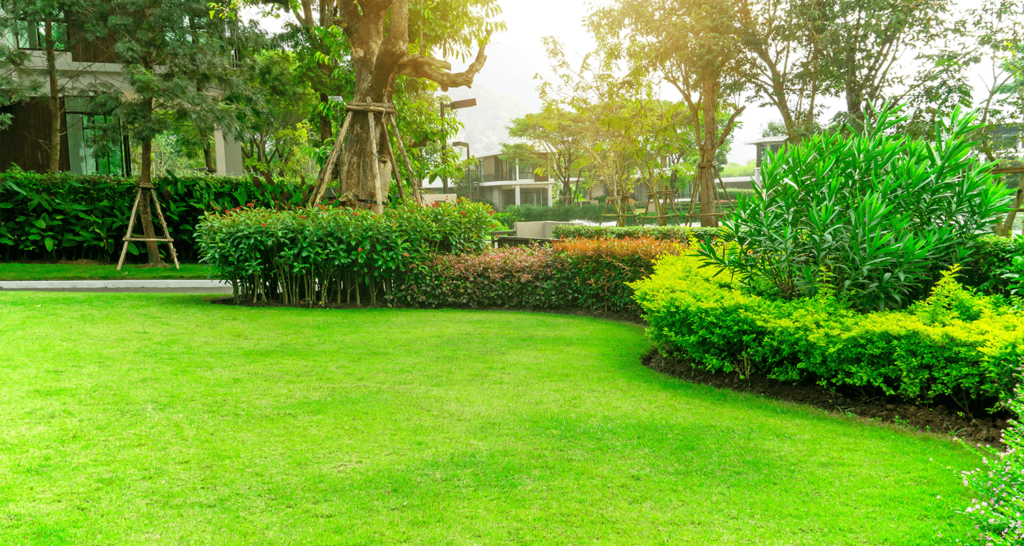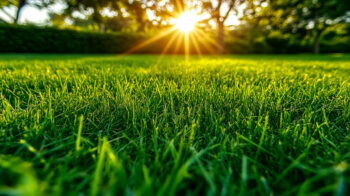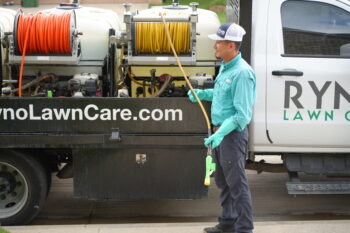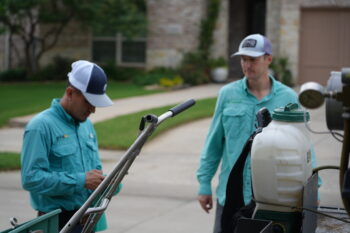Grass, nature’s verdant carpet, plays an essential role in the aesthetic appeal and functionality of lawns. As we eagerly anticipate the return of warmer days many people ask, “When will my grass start growing?”
This guide provides insight into the factors that influence grass growth. By understanding these elements, you will be equipped to nurture your lawn back to life. Then you will enjoy a lush, green space that thrives throughout the summer.
When will my warm-season grass return from dormancy?
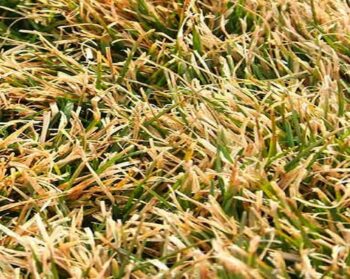
Warm-season grasses like Bermuda, Zoysia, and St. Augustine thrive in regions with hot summers and mild winters. These grass types enter dormancy during the cooler months to conserve energy.
They turn a golden brown as they await the return of more favorable conditions. As temperatures rise and days grow longer, many lawn enthusiasts’ question is, “When will my warm-season grass return from dormancy?”
The awakening of warm-season grasses from dormancy is primarily dictated by soil temperature. Warm-season grasses begin to come out of dormancy once soil temperatures reach above 50°F.
The grass does not really start to take off and become fully green until soil temperatures consistently reach 80°F. Remember, this rule of thumb is for soil temperatures, not air temperatures. In North Texas, this temperature range typically occurs in May.
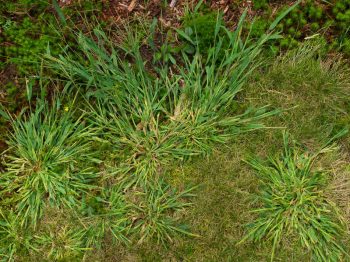
Why does my neighbor’s lawn look greener than mine?
A common point of envy among homeowners is a neighbor’s lawn’s lush, green appearance. You might wonder, “Why does my neighbor’s lawn look greener than mine?”
While several factors could contribute to the disparity in lawn quality, it is important to remember that appearances can be deceiving. Your neighbor’s lawn appears greener due to the presence of weeds, rather than an abundance of healthy grass.
Grassy weeds, such as crabgrass and poa annua, often grow more quickly than grass and develop a vibrant, green hue. As a result, a lawn infested with weeds may appear greener and healthier at first glance.
However, this deceptive greenery comes at a cost. Weeds compete with grass for essential nutrients, water, and sunlight, hindering the overall health and appearance of the lawn.
Steps to bring warm-season grasses out of dormancy
Bringing warm-season grasses out of dormancy requires patience, care, and an understanding of the factors that influence grass growth. By following these steps, you can help your warm-season grass transition from dormancy to active growth more effectively:
- Monitor soil temperature
- Resume watering
- Fertilize
- Mow with care
- Aerate and dethatch
- Weed control
- Monitor and adjust
Monitor soil temperature:
Soil temperature is crucial in determining when warm-season grasses will awaken from dormancy. Use a soil thermometer to track the temperature of your lawn. Look for consistent readings of 50°-80°F as a sign that your grass is ready to grow.
A soil rejuvenation service will improve the quality of the soil, which will enhance the growth of the grass.
Resume watering:
- As temperatures rise and soil temperatures reach the optimal range for growth, increase your watering frequency.
- Water deeply, but infrequently.
- Ensure the soil remains moist but not waterlogged. Excessive moisture can lead to root rot and other problems.
Fertilize:
- Apply a slow-release, balanced fertilizer in early spring to give your grass the essential nutrients to break dormancy and resume growth.
- Avoid over-fertilizing, which can lead to excessive growth and uneven patches.
- Under-fertilizing allows weeds and diseases opportunities to invade lawns.
- A healthy lawn is fertilized 2-4 times per year, from late winter through early fall. We recommend once in early spring and again in late spring to revitalize dormant lawns. Check out our Weed and Feed Schedule for Lawn Care.
- Always follow the manufacturer’s recommendations for application rates and timing.
Mow with care:
Avoid mowing your lawn too short during the initial stages of regrowth. This can stress the grass and impede its recovery from dormancy.
Set your mower to a higher setting, and gradually reduce the height as your grass becomes more established. Mowing at the appropriate height encourages stronger root systems and a denser lawn.
A beautiful yard doesn’t have to be hard. We mow so you don’t have to. Check out our lawn mowing service page.
Aerate and dethatch:
Compacted soil and excessive thatch can hinder the growth of warm-season grasses. Aerate your lawn in the spring to improve airflow, water infiltration, and nutrient absorption.
Additionally, dethatch your lawn if the layer of dead grass and organic matter becomes too thick, as this can inhibit new grass growth.
Call us today to find out about our lawn aeration service. It will do wonders for your lawn.
Weed control:
Tackle weeds early in the season to prevent them from competing with your grass for valuable resources. Apply herbicides for weed control in turfgrass as recommended. Hand-pull or spot-treat any existing weeds to minimize their impact on your lawn’s recovery.
Monitor and adjust:
Keep a close eye on your lawn’s progress, and be prepared to adjust your maintenance practices as needed. Warm-season grasses may require additional care during their initial regrowth period. Being attentive to grass needs ensures a successful transition from dormancy.
Follow these steps and maintain a consistent lawn care regimen and your warm-season grass will awaken from dormancy and grow into a lush, vibrant lawn. Remember that patience is key, as it may take some time for your grass to recover and reach its full potential.
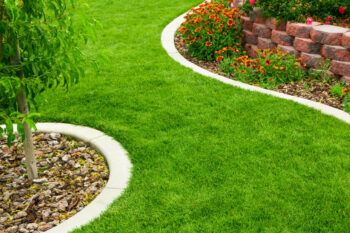
Wrapping Up
In conclusion, nurturing your warm-season grass out of dormancy requires a combination of patience, attention, and proper maintenance practices.
By understanding the factors influencing grass growth and implementing the appropriate steps, you will successfully guide your lawn through this transitional period.

